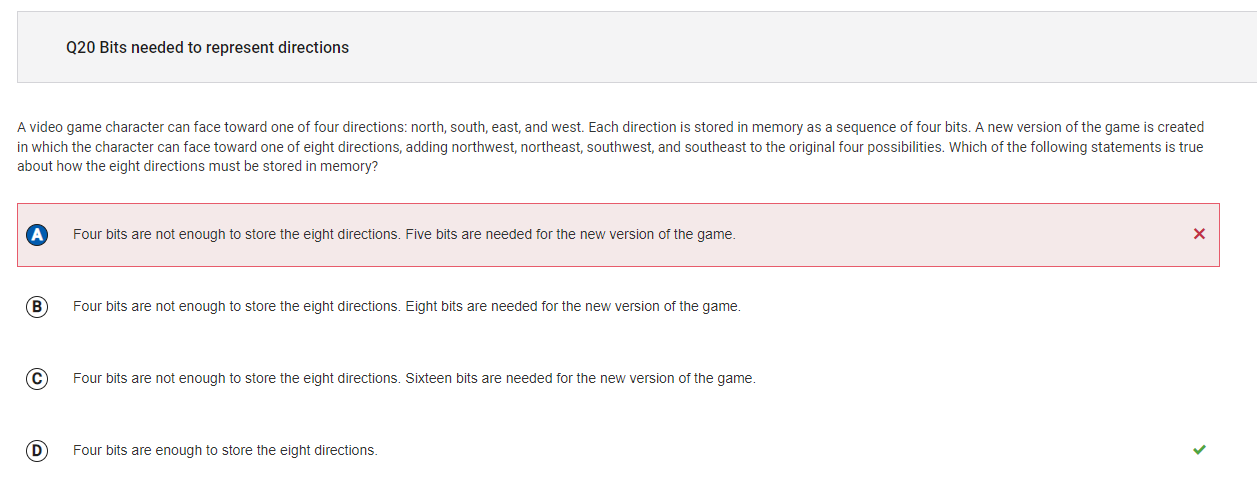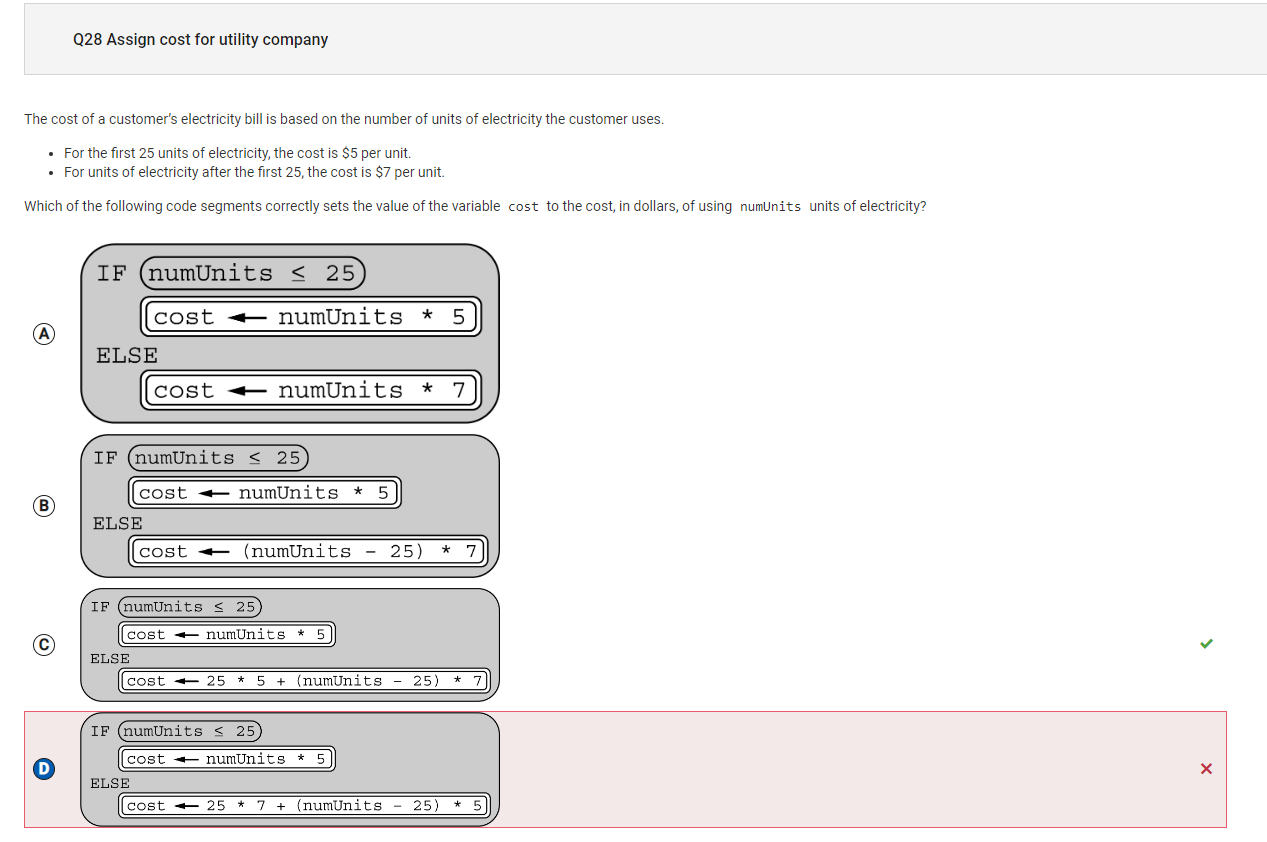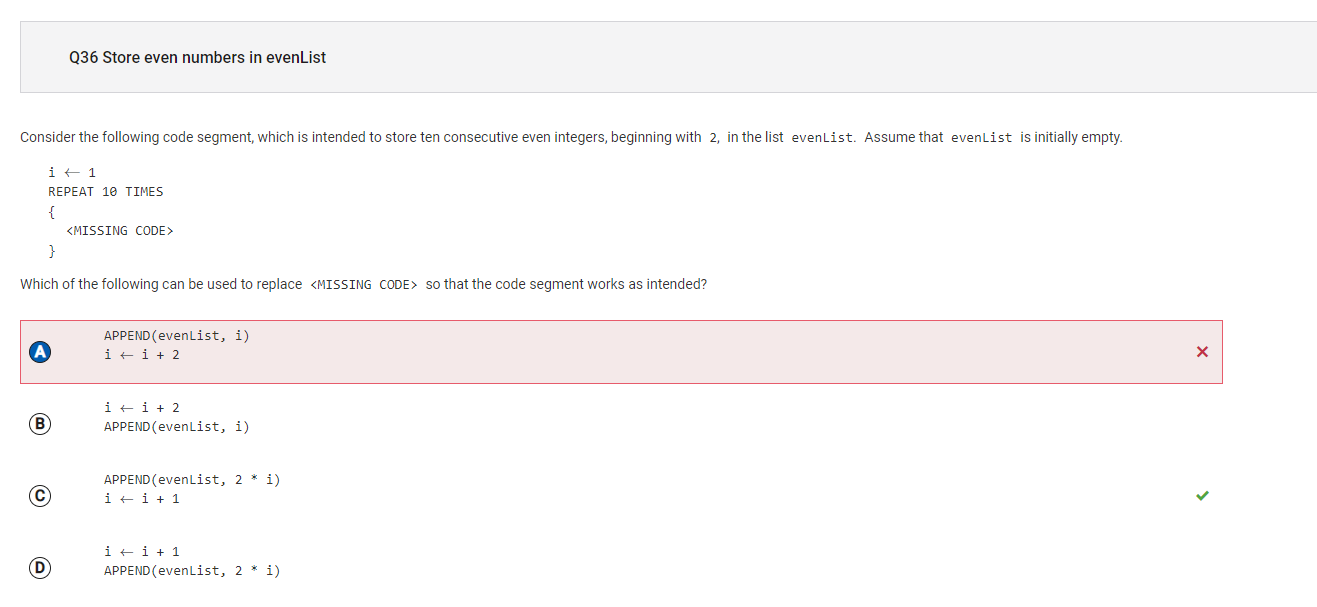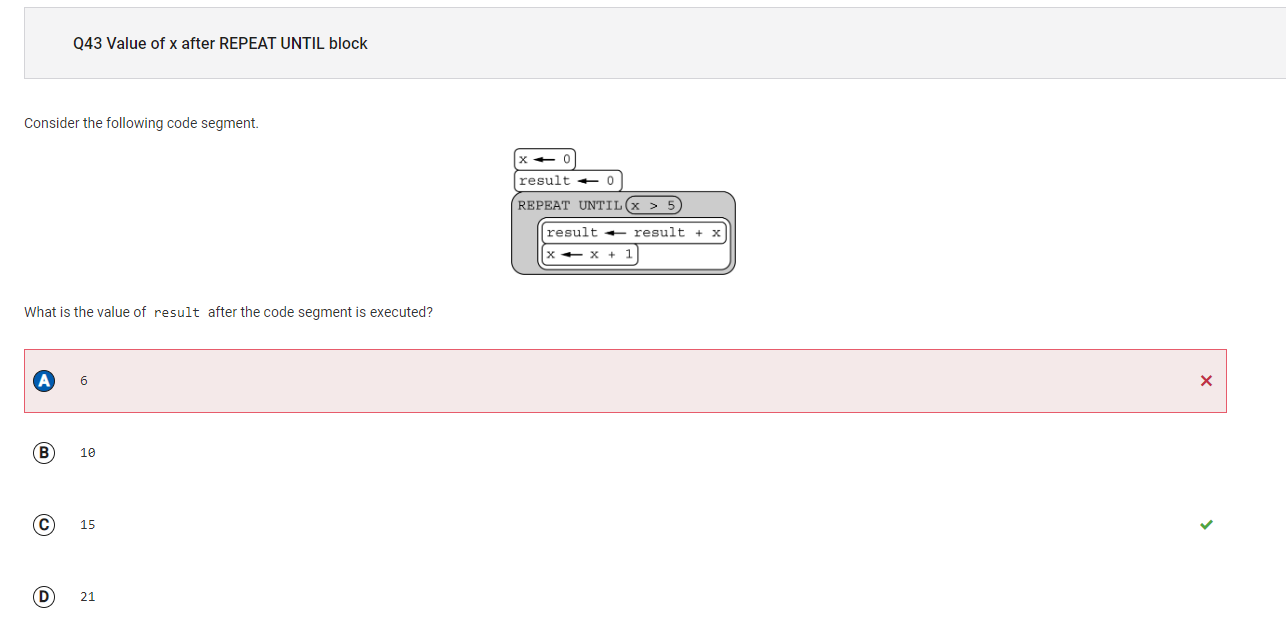My Final Exam MC Corrections.
Final Exam MC Corrections.
Question 20:

Explanation:
For this question, I thought that four bits wouldn’t be enough to store the eight directions, and that another extra bit would be needed in order to account for the 4 new directions in the game. Instead, the correct answer would be D, because four bits can represent 2 to the 4th pieces of information (in this case, directionalities), or 16 different directions. 16 > 12, therefore justifying this answer.
Question 28:

Explanation:
I made a pretty boneheaded mistake on this question, and I switched around the 7 and the 5. In the option that I chose, the customers are being charged $7 per unit for the first 25 units of electricity and then $5 per unit for the units after the first 25. It would be the other way around, which is shown in Option C.
Question 36:

Explanation:
I put the wrong answer, since in the option I chose, ‘i’ would be initialized to 2 instead of 1, therefore generating odd numbers. The question states that we want to store “ten consecutive even integers”, and therefore, it should be APPEND(evenList, 2 * i) as the first line of the missing code.
Question 43:

Explanation:
A simple misinterpretation of the question here; I put 6, since that is the value of x after the code is ran, not the result. The result would be the sum from 0 to 5, (5 + 4 + 3 + 2 + 1 + 0), or 15 in option C.
Reflection:
My strengths included the binary questions and some of the simple if/else statements and the code execution programs.
Some of my difficulties included the multi-step code execution questions, but I will improve on this throughout the year.